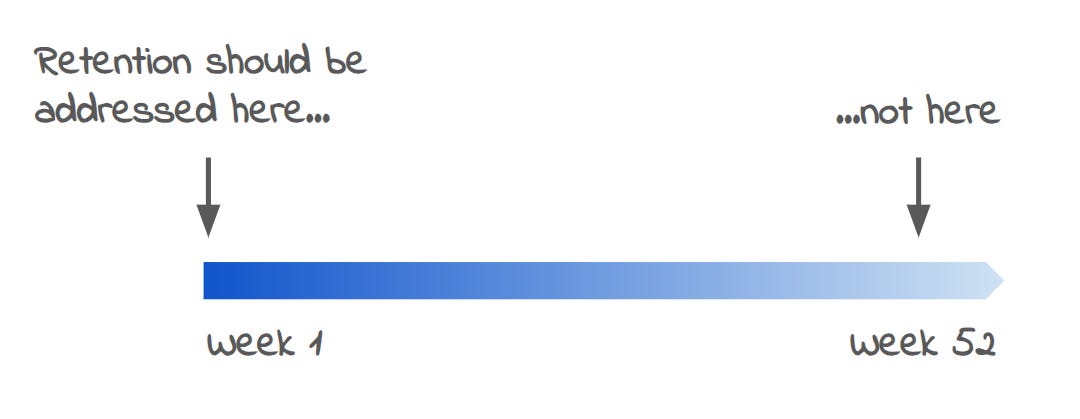Triple your retention impact by focusing on day one
Product teams focused solely on retention are set up to fail
As SaaS companies scale, they amass cohorts of dormant and churned customers. Moving retention becomes one of the most impactful metrics, and it’s tempting to spin up strike teams to address churn or even carve out product teams specifically focused on retention. But unless the retention product team also owns onboarding, chances are slim they will drive sustained outcomes.
Voluntary churn usually correlates with low engagement and seat adoption, and product teams chartered solely with improving retention will focus on reactivating dormant customers. The only tool available is out-of-app messaging - the dormant customers never see app changes - but messaging close to renewals rarely re-engages customers. Customers stand to gain very little benefit from a soon-expiring subscription, and messaging often backfires by reminding them to cancel.
What about involuntary churn? Better retry cycles and dunning can improve churn, but recovery responsibility has to sit with the team that owns payments, or you risk an overzealous payments policy that blocks too many potentially recoverable payments.
Often, the retention strike teams learn that they can’t even message the dormant customers: They might learn that many of the dormant consumers never opted into messaging/notifications or that the customer never connected to the employee directory, leaving the team with few to no options to reach their inactive customers.
Onboarding must establish re-engagement infrastructure - email capture, notification settings, and integrations. These configuration steps can drive small drop-offs in the first sessions but are usually long-term accretive. It’s therefore critical not to split the product responsibility for onboarding and retention infrastructure.
Customer engagement deteriorates quickly - a commonly cited “great” eight-week SaaS engagement retention benchmark is 35% - which means you could reach 100% of customers on day 1 with stellar onboarding or only roughly a third of your customers after 8 weeks with retention or additional configuration efforts.
Ultimately, the most effective retention efforts are focused on day one with stellar onboarding that drives initial engagement and value. Customers realizing value on the first day are more likely to show up on the second day, and so begins a journey of compounding adoption. Keep onboarding and retention efforts tightly integrated, not siloed teams as:
The best way to ensure customers are engaged on day 365 is to deliver value on day 1
Onboarding is the highest traffic moment to scaffold long-term retention infrastructure like messaging and integrations


